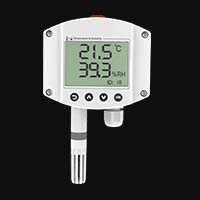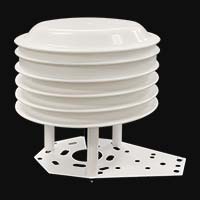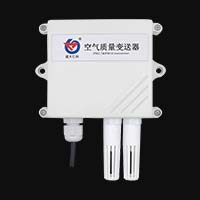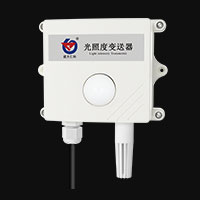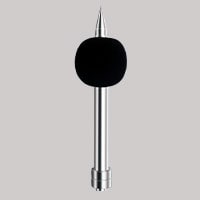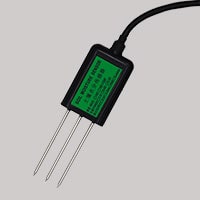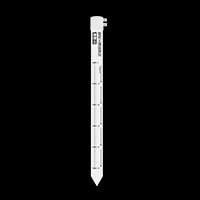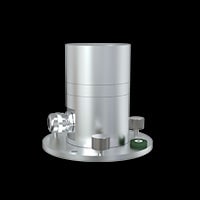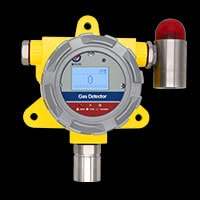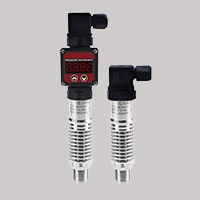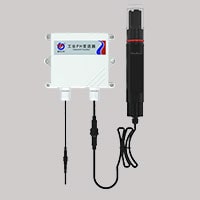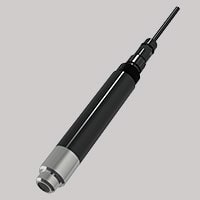The main purpose of environmental monitoring is to provide data on environmental quality and changing trends to ensure the safety of public life and property. By monitoring and analyzing various environmental indicators, we can determine the level of pollution and environmental quality. The scope of environmental monitoring involves air, temperature, humidity, soil and other types. Sensors are one of the most important tools, and environmental sensors are one of the key components commonly used in IoT designs.
What are environmental sensors?
Environmental sensors are devices that monitor various environment factors, such as temperature, humidity, air quality, and more. Environmental sensors include: soil sensors, temperature and humidity sensors, gas sensors, rainfall sensors, light sensors, wind speed and direction sensors, etc. Not only can environmental information be accurately measured, but the data can also be tested, recorded and stored.
What types of environmental sensors?
Due to the different places of environmental monitoring, there are various types of environmental sensors. Accuracy, sensitivity, and price are all factors to consider when choosing an environmental sensor. In order to help you choose the right environmental sensor, we divide environmental sensors into the following 10 types according to different measurement elements.
1.Temperature and humidity
Temperature and humidity monitoring is the most basic component of environmental sensors. The temperature and humidity in the environment not only affect agricultural production and animal husbandry, but are also important to human health. If the temperature and humidity in the environment are too high or too low, it will affect our body to a certain extent. Only when it is kept within a reasonable range can people’s whole body cells be in an active state. The temperature and humidity in the environment can be measured with a temperature and humidity sensor. Below are several temperature and humidity sensors we recommend for you.
For indoor temperature and humidity monitoring, a wall-mounted temperature and humidity sensor is usually used. This sensor occupies a small space, has good ventilation, and measures accurate data. It can be monitored for a long time without maintenance. For outdoor environmental monitoring, it is recommended that you use a solar shield temperature and humidity sensor, because it has a high degree of protection and is resistant to rain and snow erosion. Works well even in windy weather, making it ideal for use in fields such as fields and farms. Once installed, the data can be viewed remotely in real-time, which is convenient for farmers to manage in a timely manner.
2. Air quality
Air quality is the most important part of environmental sensors. Air quality measures suspended fine particles, mainly referring to PM2.5, PM10, formaldehyde, TVOC and other harmful substances, as well as carbon dioxide, negative oxygen ions, etc. People living in an environment with poor air quality for a long time will lead to chronic diseases, such as leukemia caused by excessive formaldehyde, and lung disease caused by excessive PM2.5. Therefore, it is necessary to use air quality sensors to monitor indoor and outdoor pollutant concentrations. Maintaining good air quality can prevent or reduce the occurrence of diseases. After all, prevention is much less expensive than treatment. The following are our common air quality sensors.
Wall-mounted air quality sensors are often used in industries with a lot of dust, and are deeply loved in harsh environments because of their excellent waterproof and dustproof housing. The negative oxygen ion detector can simultaneously measure negative oxygen ions, formaldehyde, PM, CO2, temperature and humidity, etc. It can be used in places with high air quality requirements, such as scenic spots, indoors, etc. In general, measuring air quality requires monitoring multiple pollutants. We recommend that you use the multi-function AQI sensor, which can monitor 11 air quality elements at the same time, which is convenient and efficient.
3. Atmosphere
Environmental sensors are included to measure atmospheric pressure, sunlight and noise. These three are also components of environmental monitoring. Atmospheric pressure is closely related to weather. Generally speaking, areas with high pressure on the ground tend to be sunny, and areas with low pressure on the ground tend to have cloudy and rainy days. Monitoring atmospheric pressure can make predictions about future weather.
Light is the prerequisite for plants to carry out photosynthesis and affects plant growth and development, so monitoring light is beneficial to agricultural production. Installing light sensors on farms is an option for smart farming.
Environmental noise is divided into industrial noise, traffic noise, building noise and living noise. Industrial noise can come from machine operation, impact and friction of mechanical parts. Traffic noise includes railway, aviation and marine noise. Construction noise includes four construction stages of earthwork, piling, structure and decoration. In addition, the noise generated by commercial and entertainment places is social life noise. Noise damages human hearing, and long-term exposure to noise-polluted environments can lead to mental breakdown. Therefore, you can choose to install long pole noise for monitoring outdoors, and use wall-mounted noise indoors.
4. Soil
Soil monitoring is the most popular environmental sensors in recent years. Soil sensors are generally used to measure factors such as temperature, moisture, electrical conductivity, nitrogen, phosphorus, potassium and pH that affect crop growth. Both smart agriculture and smart irrigation require soil sensors as front-end measurement units to upload data from different locations to the monitoring platform for storage, analysis, and scientific management.
5. Wind speed and direction
Wind speed and wind direction monitoring by environmental sensors is used to reflect meteorological information. In modern agriculture, wind sensors are used to measure wind speed and direction, analyze meteorological changes, and provide timely warnings to provide farmers with sufficient time to strengthen protection against meteorological disasters. In addition, pollutants in the atmosphere also vary with wind speed and direction. The impact of wind on air pollution includes wind direction and wind speed. In general, wind direction affects the direction in which pollutants spread. The pollutants are always transported to the downwind direction, and the polluted areas are concentrated in the downwind direction. The wind speed determines the strength and transmission distance of air pollution diffusion. The higher the wind speed, the stronger the atmospheric diffusion, and the longer the distance of pollutant transport.
There are two types of wind sensors, mechanical and ultrasonic. The three-cup wind speed sensor and the wind vane wind direction sensor are independent measurement units, which can be used alone or in combination, and are often used in agriculture and weather stations. Ultrasonic wind sensor is an all-in-one device that integrates wind speed and wind direction measurement, which cannot be measured alone, and is often used in fields such as transportation and shipping.
6. Rainfall
The monitoring of rainfall by environmental sensors considers two factors: rainfall and evaporation. Excessive rainfall can easily cause floods, which will not only pollute water resources, but also cause solid waste pollution. Destroy farmland ecosystems and endanger people’s living environment. Excessive evaporation can easily lead to drought. Drought not only affects agriculture, but also affects industrial production, urban water supply and ecological environment. The lack of water for plants leads to a large number of deaths and breaks the food chain based on this.
The tipping bucket rain gauge is the most commonly used rainfall measurement unit at present. It has high precision and high data reference value, which is beneficial to meteorological and ecological research. Often used together with an evaporation sensor.
7. Radiation
Environmental sensors need to measure radiation intensity. Solar radiation, photosynthetically active radiation and ultraviolet rays all affect the meteorological environment. Generally speaking, solar radiation will affect the development and changes of most things on the earth, so it is necessary to measure solar radiation in many fields. Measuring solar radiation in utilities can predict energy usage such as natural gas and electricity. In agriculture, it is possible to study and predict the yield of plants. It can be used to forecast weather changes. Similarly, the strength of ultraviolet rays will also affect the growth of animals and plants. Excessive ultraviolet rays will kill many organisms in the natural environment, and will harm the health of humans and organisms, thereby affecting biodiversity and ecological balance.
Solar radiation sensors are the most effective tools for monitoring the total solar radiation intensity in the environment, measuring the spectral range of 0.3~3μm. If it is placed horizontally downward, the reflected radiation can be measured, and the scattered light-shielding ring can be added to measure the scattered radiation. The PAR sensor is mainly used to measure the photosynthetically active radiation of natural light in the wavelength range of 400-700nm. Photosynthetically active radiation is the energy source for plant life activities, organic matter synthesis and yield formation. A UV sensor is a setup that uses a photosensitive element to convert a UV signal into an electrical signal. Usually used in conjunction with other weather sensors.
8. Gas
Monitoring of various gases by environmental sensors. There are a variety of gases in the atmosphere, and changes in gas concentrations can cause environmental changes. For example, excessive carbon dioxide concentration in the atmosphere will cause the greenhouse effect, excessive ozone concentration will affect plant photosynthesis and human health, and sulfur dioxide concentration will seriously affect air quality. Therefore, it is necessary to monitor the concentration of various gases with the help of gas sensors. It is helpful for professionals to take timely measures.
Common gas sensors include CO2 sensor, CO sensor, CH4 sensor, NH3 sensor, O3 sensor, SO2 sensor, NO2 sensor, H2S sensor, HCHO sensor, etc. There are gas sensors installed in fixed locations for long-term monitoring, and gas sensors that can be handheld and monitored anywhere. In some flammable and explosive places, explosion-proof gas sensors are generally installed.
9. Water level and pressure
Measuring the pressure and liquid level in water can effectively analyze changes in rivers, lakes and seas and prevent droughts and floods. Water pressure and liquid level are also an important basis for marine experts to study marine biological activities.
Lorem ipsum dolor sit amet, consectetur adipiscing elit. Ut elit tellus, luctus nec ullamcorper mattis, pulvinar dapibus leo.
10. Water quality
The proportion of water on the earth where we live is as high as 70%, and the growth of animals and plants is also inseparable from water resources. Therefore, water pollution monitoring is the basis of environmental monitoring. The complete environmental sensors are inseparable from water quality monitoring. Reflect pollution by measuring PH, EC, DO, residual chlorine, turbidity, etc.
There are many types of water quality sensors (for details, please refer to: Top 11 Water Quality Sensors For Water Treatments Easily). Different places choose different water quality sensors, such as: residual chlorine sensor must be used in drinking water treatment process, dissolved oxygen sensor is commonly used in the aquaculture industry, pH sensor, conductivity sensor and turbidity sensor are required in the sewage treatment industry. If you have any questions about choosing a water quality sensor, please feel free to contact us.
Where are environmental sensors used?
The IoT of environmental sensors is developing rapidly and is widely used in meteorological and marine scientific research. This includes sensing volcanoes, oceans, glaciers, forests, and more. Some other environmental sensor application areas are listed below.
Air pollution monitoring
From apartments to production workshops, more and more cities are deploying sensors that monitor the concentration of dangerous gases. These sensors can use wired or wireless transmission to upload data to a unified monitoring platform, enabling centralized monitoring in different areas.
Forest fire detection
Environmental sensors can be installed in forests to detect fires. These nodes can monitor the surrounding environment for temperature, humidity, and gases from tree or vegetation fires. Early detection is critical, and with data records, firefighters know when a fire starts and where it spreads.
Landslide detection
Landslide detection systems utilize inclination sensors to detect slight movements of soil and changes in various parameters that may occur before or during a landslide. With this data, it is possible to predict the occurrence of a landslide long before it actually occurs.


